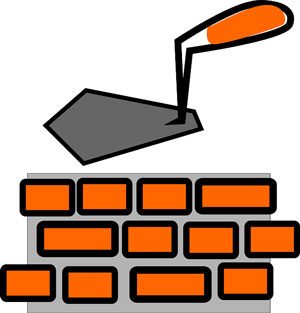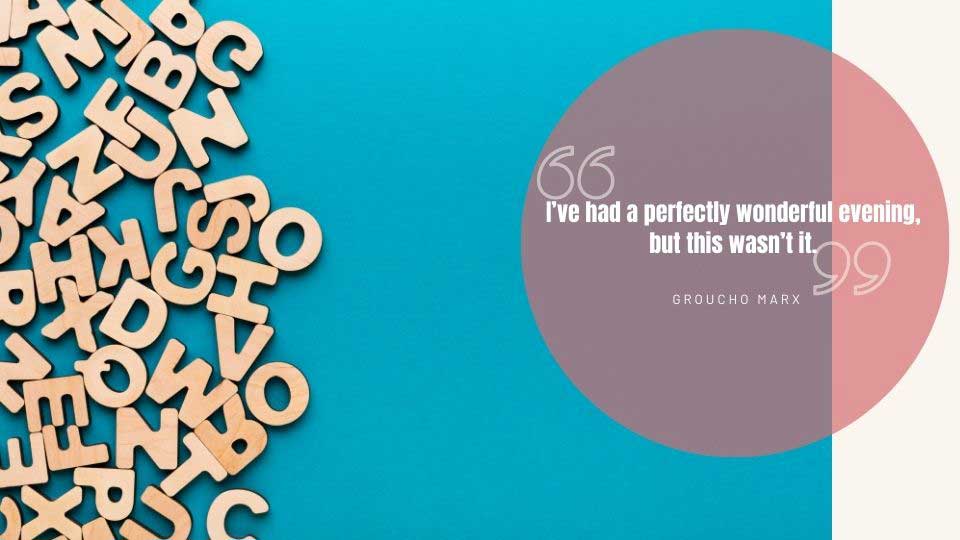
Constructed languages


The day that human civilisation realized that it could actually ‘concoct’ languages artificially instead of having to use existing ‘natural’ tongues, constructed languages were born. Conlangs, as they are fondly referred to by language buffs, are nothing more than contrived grammatical, phonological and vocabulary codes that are woven together to form a new language. However, constructed languages have a rich and illustrious history that begins as far back as the Platonic Era of nearly two and a half millennia ago.
Historically Speaking

The first known reference to linguistic experimentation was made by Plato in Cratylus. Later, other authors penned their theories and speculative constructs of grammar that formed the precursors to modern-day conlangs. It was not until the 12th century, however, that constructed languages made their presence known. The first recorded work that contained an artificially constructed language was Lingua Ignota (which means unknown language in Latin). Grammatical speculation, as it is known, was officially born.
In historic times, speaking in languages other than naturally derived ones was considered to be a supernatural act that was thought to be divinely inspired. Since then, conlangs have been used for everything from cryptography to the propagation of Christianity.
On Stranger Tongues
Conlangs come in many shapes and sizes, and each serves a specific purpose. Some ‘planned languages’ are expressly meant to facilitate human communication for the purpose of trade; some are merely a part of language games and appear as Pig Latin and other variants; others are fully crafted languages – with complete and complex vocabulary and grammar – that serve to satisfy the cravings of science fiction aficionados. However, there is no doubt that every one of these languages has played and continues to play a significant role in human interaction.
Esperanto
This unique conlang was created in 1887 and is one of the few real-world languages that have practical applications. In classic style, Hollywood proceeded to romanticise this language and project it as the future language of all humanity – fortunately, this was the very goal of L. L. Zamenhof, the inventor. Esperanto speakers today are estimated to number over 2 million. The language even has a distinct dialect called Ido.
Interlingua
This International Auxiliary Language (IAL – a term given to languages that are used for cross-cultural human interaction) was developed in the mid-20th century primarily from Latin. It is a naturalistic IAL, which means that the vocabulary and grammar have been adapted from an existing language – in this case, Latin. Although only a few hundred people actually speak this language, proponents of Interlingua claim that the language is easily understood by those that speak Romance Languages such as Spanish, French, Italian, Portuguese, Catalan, and Romanian. Irrespective of biased views, it is undeniable that Interlingua is relatively easy-to-learn for people who speak languages from which Interlingua has taken its vocabulary.
Klingon
This full-fledged language is probably the only fully formed one of its kind in the realm of science fiction. Many other attempts have been made at concocting languages aimed at science fiction buffs, but none come anywhere near Klingon. There is Huttese – the ‘court language’ of Star Wars character Jabba the Hutt; there is Sindarin – invented by JRR Tolkien as the language of the elves; there is also Vampirese – featured in the Blade trilogy. None of these conlangs, however, can claim to have achieved the fame and popularity that Klingon enjoys to this day. Estimates put the number of fluent Klingon speakers of this unique conlang at no more than 30; but despite the fact that this language seems to be so exclusive that only a handful of people are able to speak it at the ‘native’ level, it has been featured in nearly two dozen movies and television shows. In fact, it is so popular that fans have translated the Bible, Sun Tzu and even Shakespeare’s Hamlet into Klingon. All this despite the fact that Klingon has a meagre vocabulary of only 3,000 words!
A Look at Non-Verbal Conlangs
Apart from the wide range of speech-based languages that attempt to bridge the gap between cultures or create a new culture, there are other languages that employ symbols or sounds to achieve the same objectives. Solresol, for example, uses musical nomenclature (Do Re Mi Fa and so on) as its key construct element. Since the musical notes can be represented as symbols or hand gestures or even using the colours of the rainbow, Solresol ‘speakers’ can communicate in a variety of ways. Natursprache emerged in the early 17th century as a ‘natural language of the senses.’ Every one of these was an attempt at unifying diverse peoples through spoken language. Most of them died a natural death for lack of interest in promoting them, but many still live today as a reminder to humanity that were are still one of the world’s most fragmented species.
Conclusion
The world today speaks no fewer than 6,900 languages encompassing tens of thousands of dialects. It would seem that any attempt at unification from a linguistic approach would prove futile. However, this has not stopped man from pursuing the ultimate goal of bringing all of humanity under one language. Esperanto was possibly the most grandiose attempt at doing so, but it is certainly not going to be the last of these staggering attempts to teach 7 billion people to speak the same language!



15 Comments
Hi Alina,
I actually learned to speak Esperanto at university and it was great fun!
The variety of approaches to constructing a language are fascinating, from a linguistic viewpoint and also when considering the single-mindedness their inventors must have possessed. It boggles my mind that people would sit down and spend countless hours inventing a language from scratch.
You always have great ideas for blog posts!
Best,
Else
You did? That sounds really cool!
I had a look at Interlingua (while researching for this post) and it would be indeed easy to learn for those who speak a Romance language.
As for the inventors, hats off to them! It is indeed amazing and truly fascinating to be able to ‘invent’ a language – I mean, vocabulary is one thing, but grammar rules is a totally different ball game.
Thanks for commenting and for the nice words, Else.
Well, there are actually quite a lot of conlangers out there, and we all have a life besides conlanging :). It’s a hobby that takes time, but not any more than, say, knitting, or buildings ships in a bottle ;). And it’s so rewarding! 🙂
And if you want an idea of what modern conlanging looks like, have a look at https://conlang.org/, the site of the Language Creation Society (disclaimer: I am the President of the LCS). The days that conlangers were lonely souls wondering whether they were the only ones with this strange hobby are long over :).
Hi!
Not a bad article by any means, it has a few inaccuracies but that’s to be expected. Our hobby is still a bit obscure, so getting good information about it can be difficult. Have you checked Arika Okrent’s In the Land of Invented Languages? At this moment, it’s probably the best description of the history of conlanging there is. More info can be found here: https://inthelandofinventedlanguages.com/.
Hi Christophe,
Thank you for stopping by and for sharing your thoughts and experience. And also for the two links. I will check them out. You are right, there isn’t a lot of information about conlangs, so I definitely appreciate your input. I hope you’ll come back again, as I might have a few questions for you, if that’ OK.
No problem, I would be glad to answer any question you have. You may also contact me by email if you want. If you cannot access the email address I used to write those replies, please tell me and I’ll make sure you get my address :).
Thank you 🙂 Yes, I can see your email address and I’ll use it if I have any questions (I’ll probably do). But I thought others may have questions too and ask them here. We’ll see.
I’ll try and keep an eye on this post :). And as I wrote, don’t hesitate to contact me if you have any question. I’ll be more than happy to help to the best of my abilities.
You don’t have to be a science-fiction, fantasy or alt-history aficionado to make up languages. An interest in how languages work from a technical point of view (i.e. linguistics) and using a constructed language as a vehicle to explore different topics and to experiment with what you’ve learnt from reading up on things may be a good reason already.
If you’re interested in getting started, there’s two old but still nice introductions:
Language Construction Kit
How to Create a Language
And now that many researchers publish their work online, it’s become very easy to find papers, PhD theses, and even complete grammars online.
Oh, absolutely, you don’t need to be a fan of SF or fantasy to be interested in conlangs, as, like it’s been pointed put by Else too, they are extremely fascinating linguistically speaking for anyone with an interest in this field. Thanks for the resources you mentioned. As Christophe wrote above, it’s not easy to find information on made-up languages.
What I meant is that it’s rather easy today to find academic resources on real languages to serve as an inspiration for aspects of your own invented language, compared to when I started being interested in conlangs about 10 years ago. As for finding links to conlangs, there’s CALS, but your mileage definitely varies regarding how in-depth the various languages there are worked out. It may well serve as a starting point, though.
Besides CALS, another great resource is the Conlangery podcast. Besides linguistic info and info about natural languages tuned for a conlanging audience, it also features conlang description, which are always very informative.
To be fair, there actually is a lot of information online about conlangs and conlanging. It’s just difficult to find (like about everything about specialised subjects on Internet) unless you know exactly what you’re looking for (which is usually not the case, or you wouldn’t be looking for it in the first place!).
That’s also one of the reasons why the Language Creation Society exists: besides serving the conlanging community itself, we strive to be a kind of impartial information kiosk to people outside the community looking for information about it.
Thank you Alina for your post, Cratylus page bookmarked, will go through that site soon!
Hi Magda, thanks for stopping by. Glad you liked it. Also have a look at the links left in the comments by Christophe and CB – lots of interesting resources.